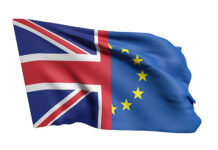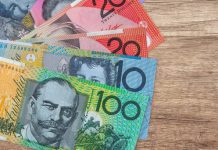USD/CAD has inched higher in the Monday session. Currently, the pair is trading slightly below the 1.34 line. On the release front, it’s a very quiet start to the week. There are no Canadian events on the schedule. The US will release Factory Orders, with the indicator expected to dip to 1.1%. On Tuesday, Canada releases trade balance and Ivey PMI.
The US dollar posted broad gains last week, and the Canadian dollar also took it on the chin, dropping 1.9 percent. Canadian GDP expanded 0.3% in January, matching the forecast. Still, this figure was lower than the December reading of 0.4%. As expected, the Bank of Canada held the benchmark rate at 0.50%, but a pessimistic rate statement weighed on the Canadian currency last week. The rate statement noted that the economy faces "significant uncertainties", including a lack of clarity over Donald Trump’s economic agenda. Trump has called for the NAFTA trade agreement to be scrapped, although he has since backtracked and said that he only wanted to "tweak" the provisions that affect Canada-US trade. Still, Trump’s protectionist stance could hit the Canadian economy hard, as Canada sends 80% of its exports to its southern border. Even if the US does not alter NAFTA, the US could slap import duties on Canadian products, which would have negative ramifications for the Canadian economy.
As the US economy continues to fire on all four cylinders, market sentiment has heated up regarding a Fed rate hike. Federal Reserve policymakers continue to sound hawkish about a rate move, as the Fed holds its policy meeting on March 15. FOMC members William Dudley and John Williams recently hinted at an imminent hike by the Fed. Dudley said the case for a hike is compelling, while Williams noted that a rate increase will be up for "serious consideration" at the March policy meeting. The markets are taking these statements at face value, sending the odds of a March move soaring upwards. The likelihood of a rate this month has jumped to 80%, compared to 33% just a week ago. Why the huge jump in odds? One reason is that policymakers are now saying they won’t wait for Donald Trump to outline tax reform or other economic packages before making a monetary move. This is a significant departure from a few weeks ago, when the Fed sent out signals that it would stay on the sidelines until it had a clearer picture of the economic stance of the new administration.












